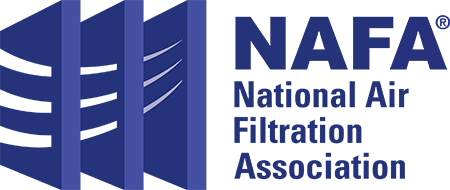Clearing the Air for Indoor Farming: Air Quality, Air Filtration, and Odor Control
September 28, 2022
Introduction
The primary goal of indoor farming is to create a thriving environment for plants to grow healthy and strong. This goal is accomplished by giving everything the plant needs, including light and carbon dioxide (CO2) for photosynthesis, the right temperature and humidity for evapotranspiration, and water and nutrient delivery for healthy development. Providing a clean indoor plant environment is important too. Clearing the air of potentially harmful airborne constituents reduces the risk of plant disease and contamination and increases the quality and yield of saleable product to be sold by the grower.
Why is air filtration important for indoor farming?
More than half of the plant’s biomass is exposed to the air. The top half of the plant is responsible for photosynthesis, evapotranspiration, and developing the parts of the plant that we consume and enjoy. For lettuce plants, those parts are the leaves. For berries, it’s the fruit. For cannabis, the flowers. When these parts are chewed on by insects, colonized by mold, or otherwise degraded by bad constituents in the air, indoor farmers lose product to sell or are forced to use pesticides to eliminate pests and pathogens, a practice they try to avoid. By filtering the air that is delivered to plants, we can clear the air of constituents that could potentially harm, contaminate, or degrade the quality of the plant parts farmers sell and we enjoy.
What constituents are indoor growers most concerned about?
There are many air constituents that are potentially harmful to plants. These constituents can be classified as biotic, abiotic, particle, and gas. Biotic contaminants are those that originate from a biological source, including pests, pathogens, and pollen. Common pests include insects such as aphids and thrips. The airborne pathogens of greatest concern include botrytis (gray mold) and powdery mildew. Pollen is of particular concern to cannabis growers, who cultivate female plants. Pollen from nearby male plants will cause the female plants to abort flowering, resulting in lost product.
Abiotic (non-biological) contaminants include smoke, ash, dust, ethylene, and other gases that can block critical pathways, stifle growth, and reduce product quality. In the case of ash and dust, deposition of those particles on the saleable (consumable) plant parts reduces their quality.
Some plants, such as cannabis, also produce volatile organic compounds (VOCs) that have an odor. These odors are of particular concern for growers in urban locations, where neighbors may not appreciate the smells emitted from a nearby indoor cannabis operation.
Therefore, using air filtration technology to eliminate or reduce the concentration of particulates and gases is not only beneficial to the health and productivity of the plant, it’s also beneficial to the cannabis farmer who strives to be a good neighbor.
What technologies are available to improve indoor air quality?
Many indoor growers practice the technique of avoidance. Basically, they avoid bringing in outside air to their indoor plant environment by using recirculating air conditioning systems. Although this strategy makes sense on the surface, if the interior air is contaminated, the problem will only exacerbate without having access to outside air to help dilute and replace the indoor air.
Elimination through air filtration is very effective at removing particulate matter, such as insects, pollen, dust, and mold spores. Using MERV 11 air filters in the HVAC system removes particles that are the size of mold spores and are effective against botrytis and powdery mildew. Viruses are of lesser concern to most indoor growers, unless they are operating a tissue culture lab or are concerned about human health (eg. COVID protection). For these smallest of particles, HEPA filters are recommended.
UV-C radiation can be used to denature the proteins (DNA) of potential biological contaminants and has been shown to be effective against powdery mildew and botrytis. However, the long exposure time required for larger constituents, such as molds, and high airflow rates of air conditioners requires the installation of long lengths of multiple high-intensity UV-C lamps, a strategy that is both capital and energy intensive.
UV-V radiation can also be used to help eliminate odors. However, because a byproduct of its reaction with oxygen is ozone, its use is only recommended if installed on the exhaust airsteam leaving the building. Activated carbon filters are still considered the cannabis industry standard for odor removal and may be used in combination with UV filters to provide a double-punch against VOCs.
Conclusion
One of the primary advantages of growing plants indoors is that they are protected from the outdoors. That includes bad weather, animals that eat or trounce through the crop, as well as potential airborne contaminants. Using particle filters in the air conditioning equipment can remove most of the potentially harmful airborne constituents, including insects, mold spores, pollen, and ash. HEPA filters may be used in spaces where viruses are the constituent of concern. UV-C and UV-V radiation can be used to further eliminate biological contaminants and odors, respectively, but rarely are used in lieu of other air cleaning technologies such as particle filters and activated carbon.
Author: Nadia Sabeh, PhD, PE, LEED AP, President, Dr. Greenhouse
Dr. Nadia Sabeh (A.K.A. “Dr. Greenhouse”) is President and Founder of Dr. Greenhouse, Inc., an agricultural and mechanical engineering firm located in Sacramento, CA that specializes in the design of HVAC systems for indoor plant environments. She is considered the subject matter expert in the field of controlled environment agriculture (CEA).
Dr. Sabeh has her PhD in Agricultural Engineering from the University of Arizona’s Controlled Environment Agriculture Center (CEAC) and is a licensed Mechanical Engineer in the State of California. She currently serves as Chair of the ASABE/ASHRAE co-sponsored committee responsible for developing the standard “HVAC for Indoor Plant Environments without Sunlight,” is the Chair of ASHRAE’s Plant and Animal Environments Technical Committee, serves on the HVAC Advisory Committee for the Resource Innovation Institute, and is actively engaged in academic and industry research.
